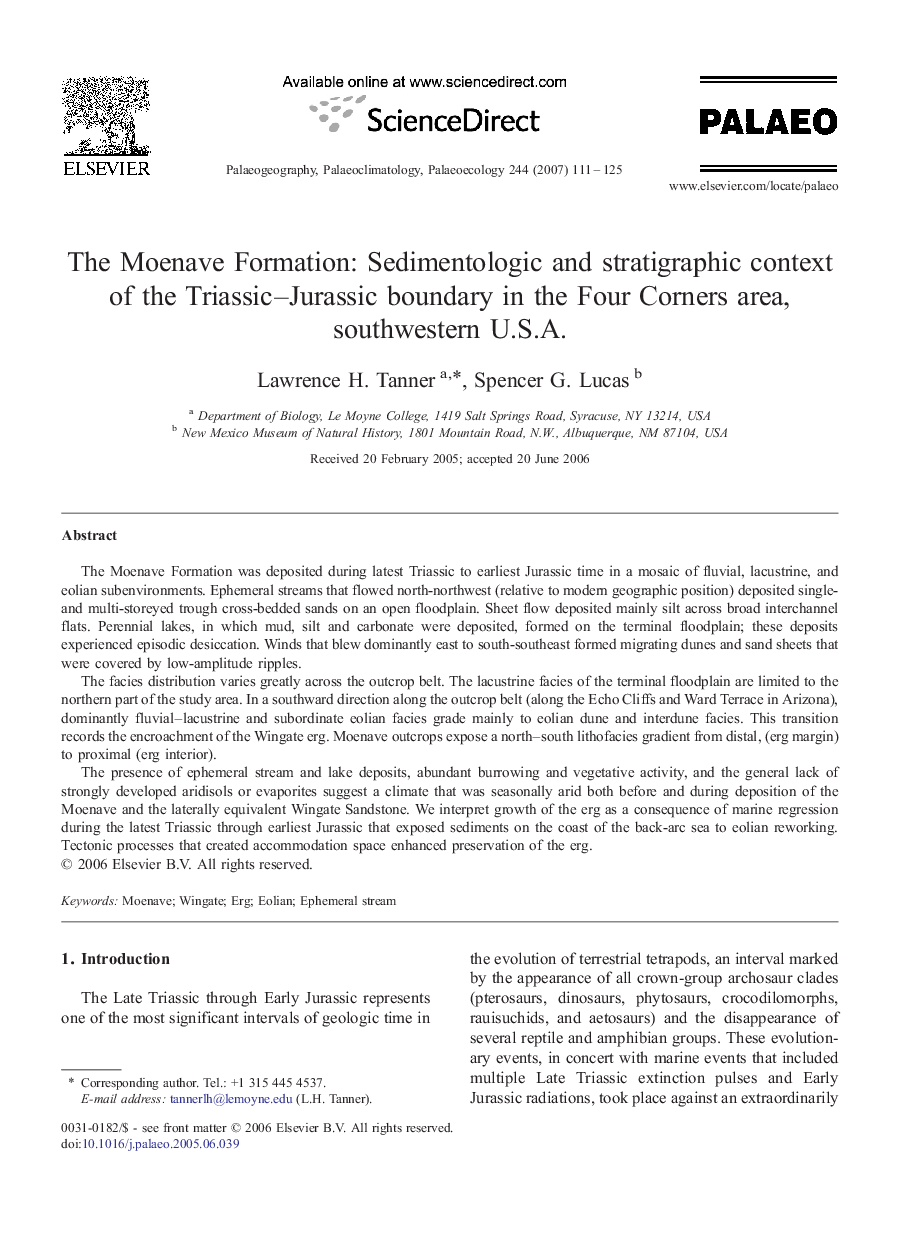| کد مقاله | کد نشریه | سال انتشار | مقاله انگلیسی | نسخه تمام متن |
|---|---|---|---|---|
| 4469226 | 1622359 | 2007 | 15 صفحه PDF | دانلود رایگان |

The Moenave Formation was deposited during latest Triassic to earliest Jurassic time in a mosaic of fluvial, lacustrine, and eolian subenvironments. Ephemeral streams that flowed north-northwest (relative to modern geographic position) deposited single- and multi-storeyed trough cross-bedded sands on an open floodplain. Sheet flow deposited mainly silt across broad interchannel flats. Perennial lakes, in which mud, silt and carbonate were deposited, formed on the terminal floodplain; these deposits experienced episodic desiccation. Winds that blew dominantly east to south-southeast formed migrating dunes and sand sheets that were covered by low-amplitude ripples.The facies distribution varies greatly across the outcrop belt. The lacustrine facies of the terminal floodplain are limited to the northern part of the study area. In a southward direction along the outcrop belt (along the Echo Cliffs and Ward Terrace in Arizona), dominantly fluvial–lacustrine and subordinate eolian facies grade mainly to eolian dune and interdune facies. This transition records the encroachment of the Wingate erg. Moenave outcrops expose a north–south lithofacies gradient from distal, (erg margin) to proximal (erg interior).The presence of ephemeral stream and lake deposits, abundant burrowing and vegetative activity, and the general lack of strongly developed aridisols or evaporites suggest a climate that was seasonally arid both before and during deposition of the Moenave and the laterally equivalent Wingate Sandstone. We interpret growth of the erg as a consequence of marine regression during the latest Triassic through earliest Jurassic that exposed sediments on the coast of the back-arc sea to eolian reworking. Tectonic processes that created accommodation space enhanced preservation of the erg.
Journal: Palaeogeography, Palaeoclimatology, Palaeoecology - Volume 244, Issues 1–4, 9 February 2007, Pages 111–125